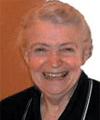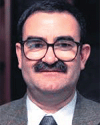
2005 TMS Annual Meeting & Exhibition: Short Courses
 |
TMS ONLINE | MEMBERS ONLY | SITE MAP 2005 TMS Annual Meeting & Exhibition: Short Courses |
| | |
|
| INSTRUCTOR |
 |
| MILDRED
DRESSELHAUS Institute Professor of Electrical Engineering and Physics Massachusetts Institute of Technology USA |
| INSTRUCTOR |
 |
| DAVID
TOMÁNEK Professor of Physics Michigan State University USA |
Carbon nanotubes are maybe the most significant spinoff product of fullerene research, which lead to the discovery of the C60 “buckyball”, rewarded by the 1996 Nobel Prize in Chemistry. Nanotubes based on carbon or other elements consist of graphitic layers seamlessly wrapped to cylinders. With only a few nano-meters in diameter, yet (presently) up to milli-meters long, the length-to-width aspect ratio is extremely high. Nanotubes combine atomic scale perfection with chemical inertness, high mechanical strength, excellent electrical, and thermal conductance.
Accordingly, the number of both specialized and largescale applications is growing constantly, ranging from additives in Li-ion batteries to conductive high-strength composites and flat-panel displays. This course will review the morphology, synthesis, characterization, physical properties, and current applications of nanotubes.
Mildred Dresselhaus is an Institute Professor of Electrical Engineering and Physics at the Massachusetts Institute of Technology. She obtained her PhD in Physics at the University of Chicago in 1958. After a two year NSF postdoc at Cornell University, she became a staff member in the Solid State Division of the MIT Lincoln Laboratory in 1960 studying electronic energy band structure of materials at high magnetic fields using magneto-optical techniques. She remained at Lincoln Laboratory until joining the MIT faculty in the Electrical Engineering Department in 1967. In the 1960s and 1970s she did pioneering work on the electronic structure of graphite and the group V semimetals, and made major advances elucidating the intercalation physics of graphite intercalation compounds. Since then she has made major contributions to our understanding of carbon fibers, the science of novel carbon materials, the remarkable structure, and properties of fullerenes and of carbon nanotubes, and in advancing the field of nanoscience more generally. Her 4 books on carbon science and carbon nanotubes are widely used by students and workers in the field.
David Tománek is Professor of Physics at Michigan State University. After his Ph.D. at the Free University Berlin, he joined the AT&T Bell Laboratories for a short time. Taking a leave of absence from his Assistant Professor position in Berlin, he continued his carrier as a Research Fellow at the Physics Department of the University of California in Berkeley. At Michigan State University, he established a strong research program in Computational Nanotechnology. Focusing on low-dimensional systems including fullerenes, nanotubes, ferrofluids, metallic and magnetic clusters, he developed and applied a wide range of numerical techniques to study the structural, electronic, and optical properties of these systems. Maybe best known among his 170 scholarly publications are predictive calculations for the growth, mechanical strength, and thermal conductivity of carbon nanotubes, optical properties of carbon nanostructures, conductivity, and superconductivity of nanocarbons including fullerenes and nanotubes.
Christina Raabe
TMS, Manager of Continuing Ed and Information
184 Thorn Hill Road
Warrendale PA 15086 USA
Tel (724) 776-9000 ext. 212
Fax (724) 776-3770
E-mail raabe@tms.org